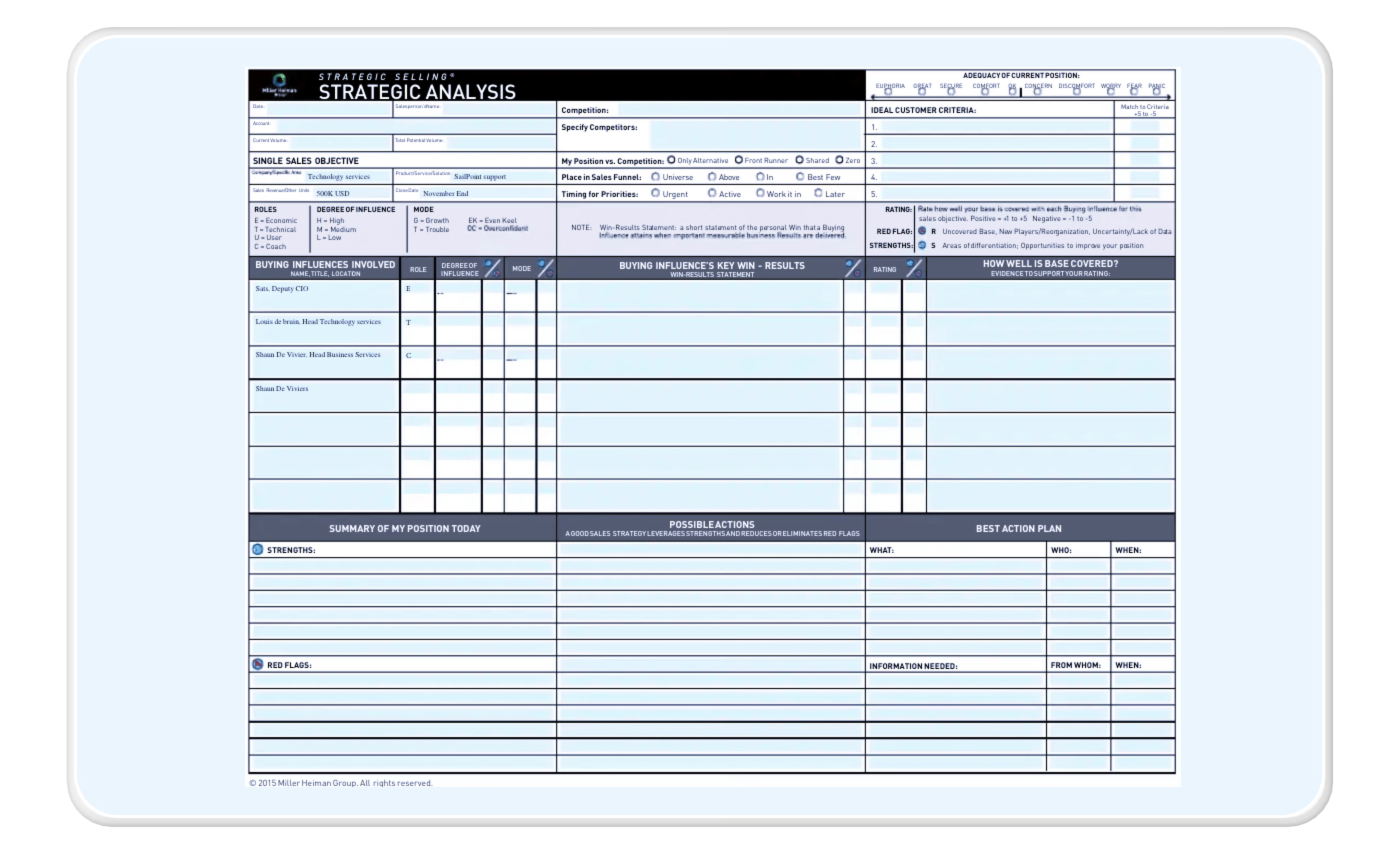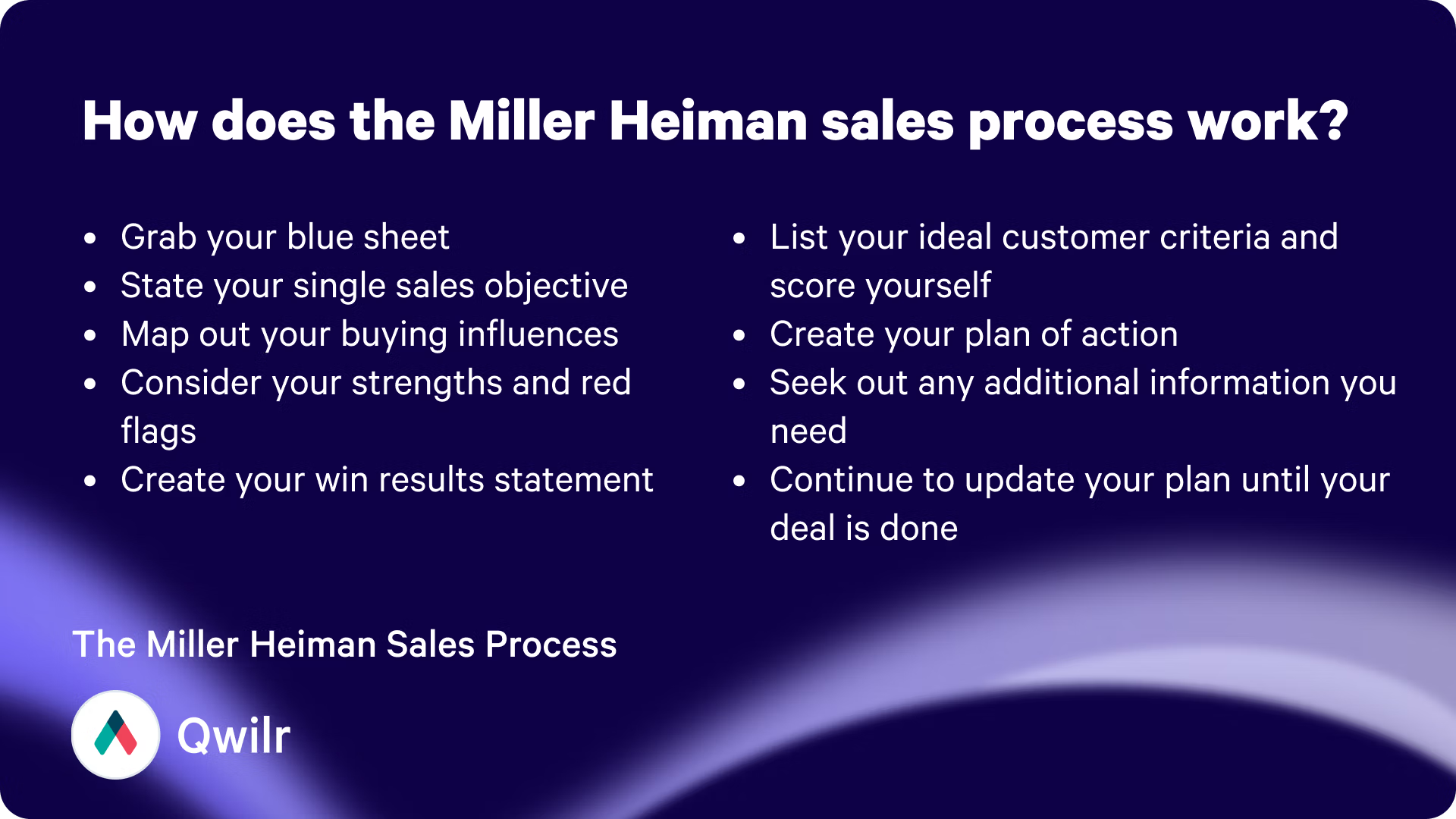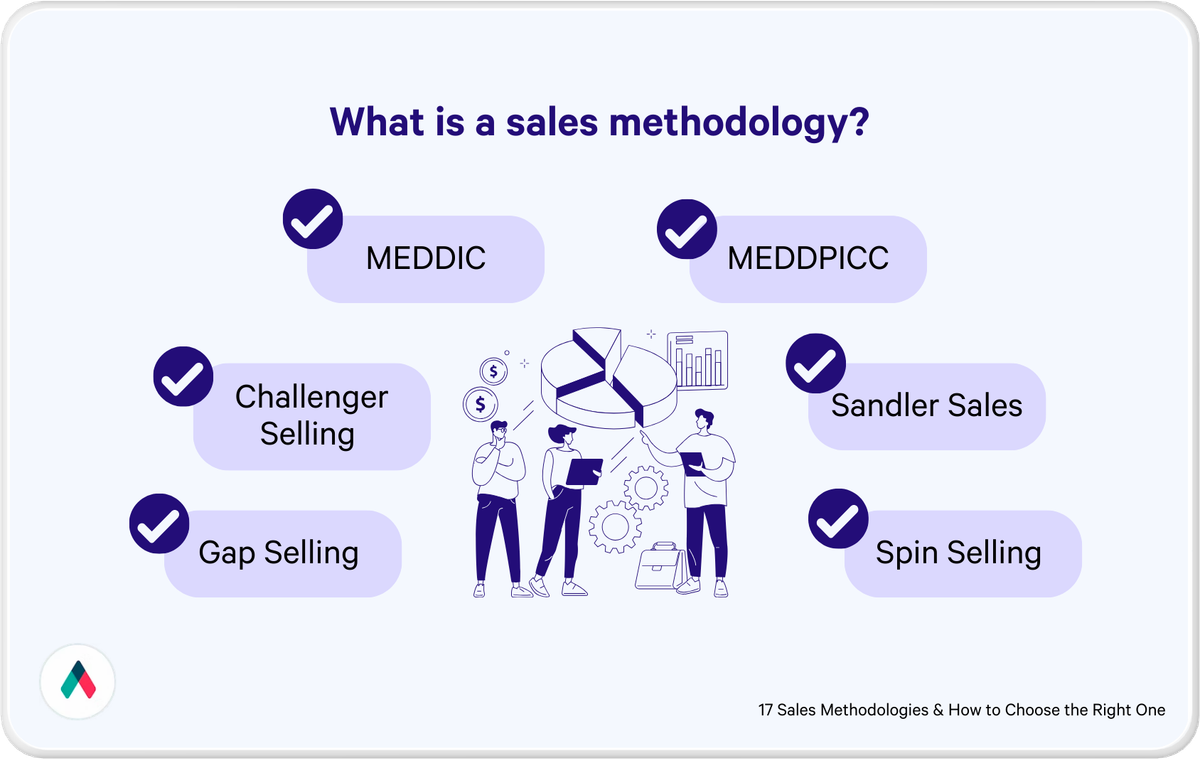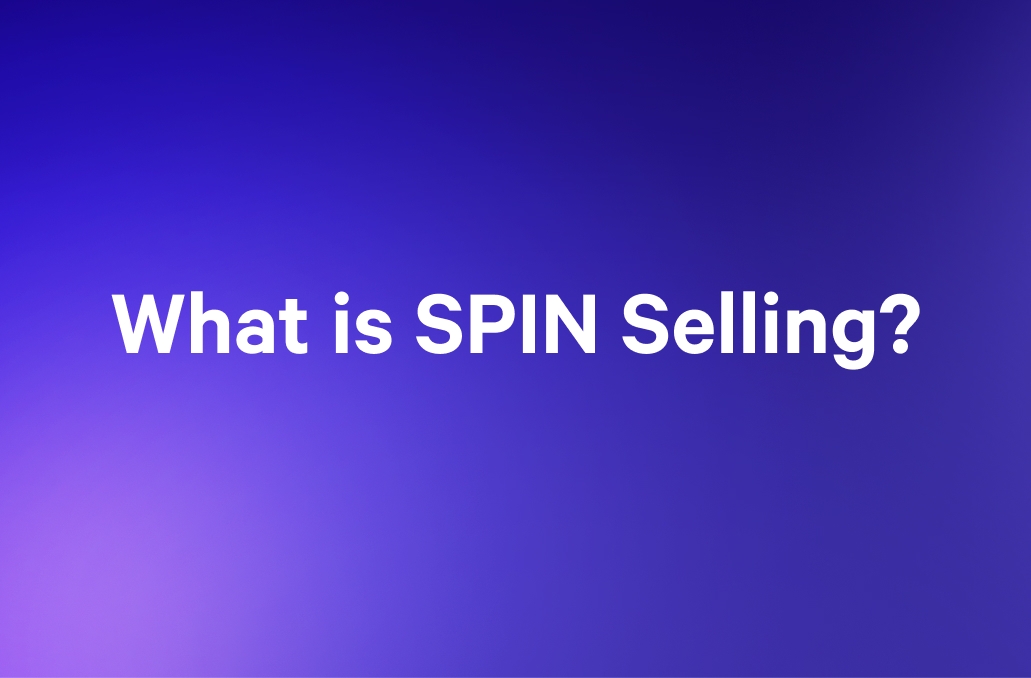If you’re a sales rep operating in a complex selling environment, you've likely been told by a sales manager that you need to be more 'strategic'. But what does that really mean? Often, the specific guidance or coaching to put this into practice is missing.
Sure, you can do some research and seek something to use to your advantage, but what does it mean to build out a sales process that’s centered around strategy?
On the flip side, if you’re a sales leader and you're reading this article, you may be wondering how to support your reps in taking a more strategic approach with their buyers, and perhaps you're also exploring what coaching, resources or sales tools you could provide.
To help and provide some insight into a more strategic sales approach, we will take you back in time. Four decades ago, to be precise. This is when Robert Miller and Stephen Heiman published their bestselling book, The New Strategic Selling.
But first, who were Miller and Heiman?
What makes Robert B. Miller and Stephen E. Heiman, apart from their impressive names, authorities on selling? Well, they were deep in the sales trenches for decades, working across a range of industries and companies.
They experienced first-hand how to solve real-world problems and gained a ton of insight into how sales work in different contexts.
And they took that experience and created practical applications to apply to sales, as well as helpful tools for analyzing opportunities (Blue Sheet) and planning sales calls (Green Sheet).
Essentially, they knew what they were talking about and you should listen up.
What is the Miller Heiman sales process?
The Miller Heiman strategic sales process is adept at handling complex B2B transactions, emphasizing win-win outcomes for both parties involved. It focuses on empowering sellers to assist buyers in overcoming challenges and maximizing ROI, fostering enduring and mutually beneficial partnerships.
Miller Heiman's strategic selling process is centered around the iconic blue sheet. The blue sheet provides a framework for developing a winning strategy - regardless of your competition.
When initiating a new sales process, the blue sheet helps you map out your sales objective, buying influences and their degrees of influence on the deal, the criteria and your solution’s alignment with them, red flags and success factors, and known and unknown factors that contribute to your ability to achieve your sales objective.
While this sales methodology may be a bit dated, it still works well in a modern sales environment.
What makes the Miller Heiman sales process unique?
The Miller Heiman sales process is unique in how it guides salespeople to gather and analyze information and build relationships to help them solidify their position with their prospects. The blue sheet information gathering will start early in the sales cycle and will be a living document.

It can be revised over time by uncovering more of the needed information throughout conversations with the decision makers, also known as buying influences in the Miller Heiman process.
How does the Miller Heiman sales process work?
Are you curious about how this process might work in your organization? Let’s walk through the blue sheet and how to fill it out. Note that this walkthrough is a general explanation of the process and does not replace formal training for your sales team.

Pros and cons of the Miller Heiman sales process
Before diving deeper into the specifics of the Miller Heiman Sales Process, it's crucial for sales teams to understand what this approach can offer them and what potential challenges they may face.
As with any strategy, it brings a unique set of strengths that have been celebrated by many organizations worldwide. Yet, there are considerations that one must ponder to ensure the fit is right for their team's structure, market, and sales complexity.
Here’s a balanced snapshot that can guide you in this decision-making process:
Pros
- Offers a systematic framework that enhances sales reps' organizational and strategic focus.
- Concentrates on a thorough comprehension of the prospect's priorities, laying the foundation for stronger, win-win partnerships.
- Endorsed by its successful application across diverse sales environments, reflecting its effectiveness.
Cons
- Initial time investment can be substantial, particularly for newcomers to the methodology.
- Its intricate design might present an implementation challenge for some sales professionals.
- May not be universally applicable, with a preference for complex, multi-tiered sales initiatives.
- The cost of training and mastery of the process could be prohibitive for some sales outfits.
Additionally, comparing the Miller Heiman approach with other methodologies, like MEDDIC, MEDDPICC, and BANT, as well as considering the adaptability of your team, are steps that should not be overlooked.
Miller Heiman strategic framework: How does it work?
Grab your blue sheet
In order to kick off the process, you’ll need a blue sheet. In the past, this was a physical piece of blue paper in the famous format. The story goes that when printing out the original sheets, the printer was out of white paper, so they were printed in blue. The color stuck, and that’s how they got the name. Today, there are electronic versions (that aren’t blue anymore), and some CRMs have the blue sheet built in so that the data can be used for forecasting and other reporting and to have a single source of truth regarding client contacts and deals in the pipeline.
State your single sales objective
Miller Heiman strategic selling simplifies the sales process by distilling the goal down to one single sales objective. This objective should be a win-win for both buyer and seller. A good single sales objective is extremely specific. For example, an enterprise SaaS sales executive looking to close a deal with Coca-Cola might say their single sales objective is to sell $45 Million worth of their software to Coca-Cola.
Map out your buying influences
Miller Heiman’s process is designed so that salespeople need to meet and engage with multiple stakeholders in the prospect’s organization. This is because, in a complex sales environment, these stakeholders all have different needs and. input into a final decision. Failing to understand the needs and goals of any of these key players can cost a salesperson the deal. Miller Heiman categorizes buying influences into the following:
- Economic Buyer: The economic buyer is the person on the buying committee who has authority over the deal. They can say no when every other person on the committee says yes and they can say yes to the deal when every other person on the committee says no.
- User Buyer: The user buyer is the person who will work with your solution on a day to day basis. In a large account, you might encounter multiple user buyers.
- Technical Buyer: The technical buyer is the person or people in the organization who will evaluate the technical requirements of your solution. For example, if you’re selling a CRM to a sales team, the technical buyer might not work in sales at all but might be a CIO or IT director who is helping to determine if your CRM meets the technical requirements for their systems and keeps customer data protected appropriately.
- Coach: The coach is a person inside the organization who actively supports your solution and only your solution. This person is your voice and cheerleader when you’re not in the room. In order to find the true coach, you want to ensure this person has enough power and influence in the organization. If the coach can’t get you access to decision makers or critical information, they aren’t really a coach; they’re a fan of your brand!

Miller Heiman doesn’t just ask sales reps to identify these players. It further asks them to rate the degree of influence of each buying influence as high, medium, or low. For example, a technical buyer with a low degree of influence may or may not be concerning depending on how technically complex your solution (and single sales objective) is.
The other way you’ll analyze your buying influences in this methodology is by how they feel about changing the status quo. You’re looking out for:
- Growth Mode: These buying influences are ready to go. They’re tired of the status quo and ready to try something different to accelerate their organization’s growth.
- Trouble Mode: A buying influence in trouble mode has an active and likely very large problem. They need their purchase to help save them from falling into a bigger problem.
- Even Keel: When your buying influence is even keel, they aren’t really looking to make a change. Think of even keel more like window shopping - they’ll look but they’re in no rush to buy. That said, if you show them they need it bad enough they might be willing to invest now.
- Overconfident: An overconfident buying influence is someone who is doubling down on the current solution. They may have even been the one to select it. They’re resistant to change and might not be open to hearing what you have to say (even if their boss is making them sit in the meeting).
Consider your strengths and red flags
The blue sheet also asks sellers to list out and consider their strengths and red flags. This could include differentiators, customer needs or requirements, and any perceived weaknesses. For example, if you’re selling financial modeling software to smaller and medium-sized businesses, a strength could be your product’s scalability and ability to grow with a business. A red flag may be that your sales model requires a finance team of at least five people in order for your solution to be financially viable.
When doing this part of the exercise, it helps to consider the pain points of each of they key decision-makers and evaluate how your product or service can support their organization in solving these.
Create your win results statement
Get ready to win your deal by creating your win results statement for each of your buying influences. These statements are like seeing into the future. They should answer the question, “How will this person win when my product or service delivers on its promises?”
Miller Heiman’s philosophy centers around creating deals that are a win-win. This means your statement needs to help show that the deal you’re working on is a win for both the sales rep and each of the buying influences.
One thing to consider here - if slashing your prices down to the very bottom is the only way you can win the deal, you don’t have a win-win situation.
List your ideal customer criteria and score yourself
If you’re still in the game and working through your blue sheet, the next step will be to list your ideal customer criteria - what is your ideal customer looking for in this sales process, and how will they know if they’ve found it?
After you’ve made your list (and checked it twice - maybe with your champion), you’ll get really honest with yourself and score your solution on how it measures up to the criteria. Where are you able to win easily, and what will you need to proactively address to achieve your single sales objective?
Create your plan of action
The key to successful sales, regardless of methodology, is a plan of action, but the Miller Heiman methodology mandates creating one as part of the blue sheet. No matter how experienced you are as a sales professional, it’s important that you don’t skip steps in the blue sheet and that you follow the process to collect and act on all of the information.
This plan of action will help you to win your deal and also build long-term relationships along the way.
Your plan may involve many touch points with all of your buying influences across the decision-making process. You might need to make regular sales calls and hold a number of sales meetings and conversations in order to execute your plan and get the information you need to keep moving your deal forward.
Seek out any additional information you need
Once you’ve got as much of the blue sheet completed as possible and you’ve completed your plan of action - the first thing you still need to do is to seek out any additional information you need.
This might be accomplished by working with your coach, or any of the other buying influences, to get your questions answered; or by meeting with your sales manager to determine the best path forward and a sales strategy to improve your ability to close the deal and manage your sales performance.
Continue to update your plan until your deal is done
Your blue sheet is not a static document that is one and done. As you and your team progress through the sales process and guide your prospect to buying decisions, you may learn more about your strengths, red flags, and how well you’re actually covering your bases. Through additional sales meetings and conversations, you may uncover more of the information you need to close the deal (or walk away if the number of red flags continues to grow)

Top 5 benefits of the Miller Heiman sales strategy
1. Brings structure to the sales process
One of the biggest advantages of the Miller Heiman strategy is that it brings a structured, repeatable process to sales. Instead of relying on intuition or winging it, sales teams can follow a clear framework that guides them through each step of the sales cycle. Tools like the Blue Sheet and Green Sheet help organize everything, from mapping out the key decision-makers to strategizing your next move. This level of structure ensures that no critical step is overlooked, which can be a game-changer when managing complex, high-value sales.
2. Helps manage stakeholders effectively
In many sales situations—especially in B2B deals—you’re not just selling to one person; you’re dealing with multiple stakeholders with different roles and priorities. The Miller Heiman methodology makes it easier to identify and understand each person’s influence in the buying process, whether they’re a decision-maker, an influencer, or a potential blocker. By tailoring your approach to each individual, you can address their unique concerns and build alignment across the buying team, significantly increasing your chances of closing the deal.
3. Increases chances of closing deals
This strategy encourages sales professionals to think critically about their opportunities. Instead of chasing every potential lead, you’re guided to focus on deals where you’re most likely to succeed. By evaluating factors like the strength of your relationships with stakeholders and how well your solution aligns with the customer’s needs, you can prioritize the deals that are worth your time. This focus on quality over quantity not only saves time but also improves your overall win rates.
4. Keeps focus on customer needs
At its core, the Miller Heiman strategy is all about the customer. It encourages sales reps to really listen and understand what the buyer needs, rather than just pushing a product or service. The Conceptual Selling component of the methodology is particularly helpful here, as it emphasizes having meaningful conversations that uncover what’s most important to the buyer. When customers feel understood and see that you’re offering a solution tailored to their challenges, trust is built—and trust often leads to a yes.
5. Builds stronger long-term relationship
This strategy isn’t about making a quick sale and moving on; it’s designed to help you build lasting relationships. By focusing on your customer’s long-term goals and aligning your solutions to those goals, you position yourself as a partner rather than just a vendor. This approach not only helps you close the immediate deal but also lays the groundwork for future opportunities, repeat business, and even referrals. It’s a win-win for both the seller and the buyer.
Is the Miller Heiman methodology right for your organization?
The Miller Heiman process may be right for your sales organization if you sell products, goods, or services to organizations with multiple stakeholders. Generally, organizations who sell to enterprise organizations can benefit from using Miller Heiman, but any sales team that sells to multiple stakeholders and needs to build long-term customer relationships within their prospect and client organizations can benefit from the Miller Heiman Sales Methodology.
Beyond the blue sheet: Other Miller Heiman Offerings
While the blue sheet is one of the most popular Miller Heiman offerings, it’s not the only one. Miller Heiman Large Account Management Process (gold sheet), Conceptual Selling, and are other processes your team can leverage to help close deals and streamline processes.
Once you have your blue sheet (or any of the other Miller Heiman processes) completed, you can use the information you’ve obtained to craft a winning sales proposal. And this is where Qwilr comes in. We can help you create sales materials to highlight your strengths to all of your buying influences at multiple points in your sales process.
Our integrated analytics capabilities can further help sales teams understand what is resonating with each buying influence! Want to see it in action? Book a demo now.
About the author

Marissa Taffer|Founder & President of M. Taffer Consulting
Marissa Taffer is the Founder & President of M. Taffer Consulting. She brings over 15 years of sales and marketing experience across various industries to a broad range of clients.
FAQs
The Miller Heiman Sales Process was developed by Robert Miller and Stephen Heiman. With their innovative approach, they transformed the landscape of sales strategies, highlighting the significance of forging genuine connections and comprehending the buyer's requirements for fruitful collaborations.
The four types of buyers in Miller Heiman Strategic Selling are the User Buyer, The Technical Buyer, The Economic Buyer, and the Champion.
The ideal customer criteria section of the blue sheet encourages sellers to find out the criteria their customer is measuring them against. They then need to rate their match to each criterion on a scale of -5 to +5.


